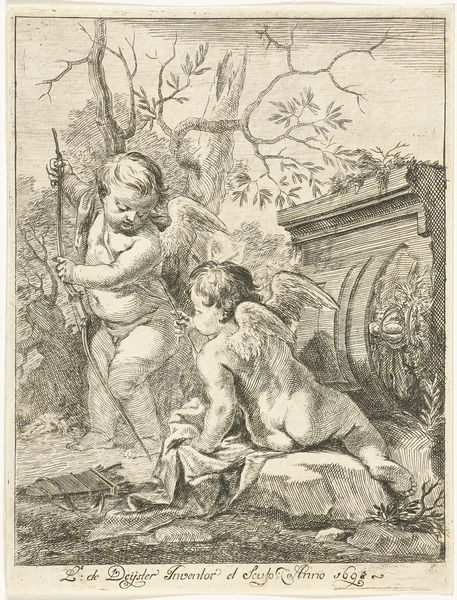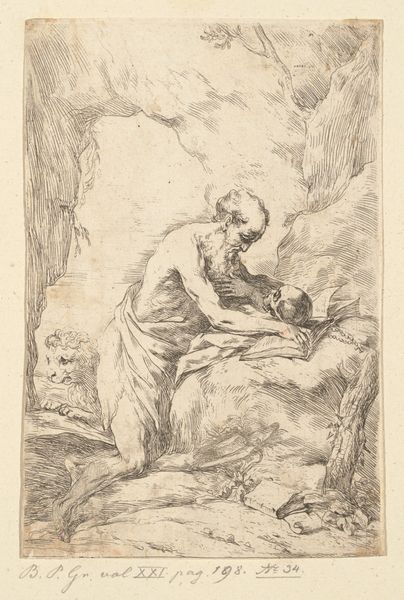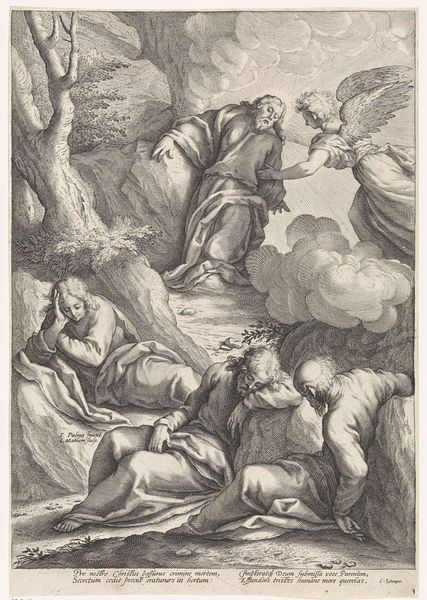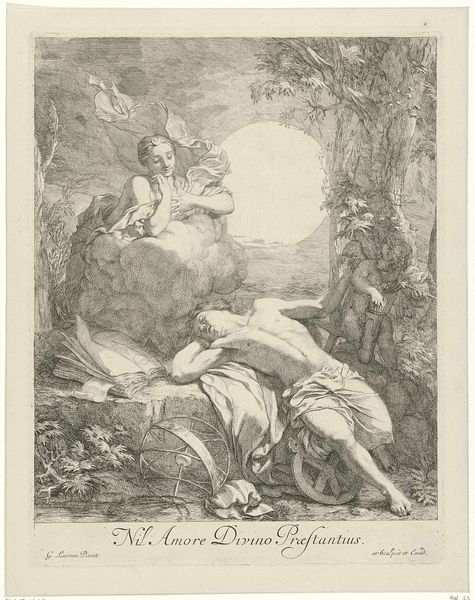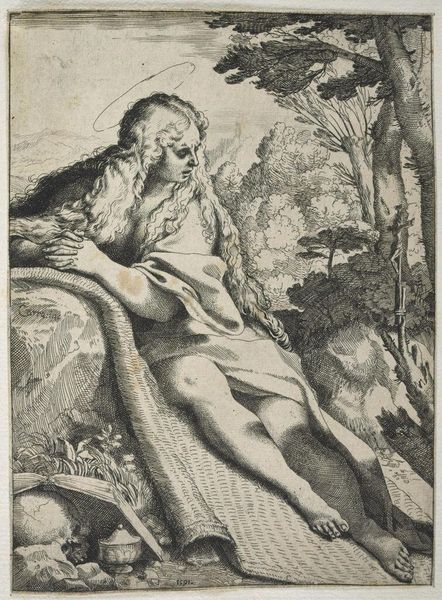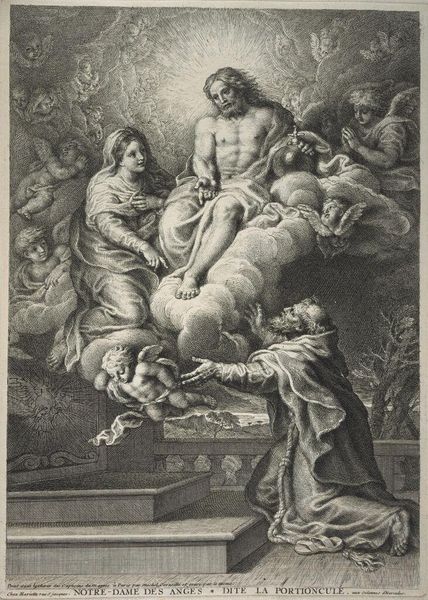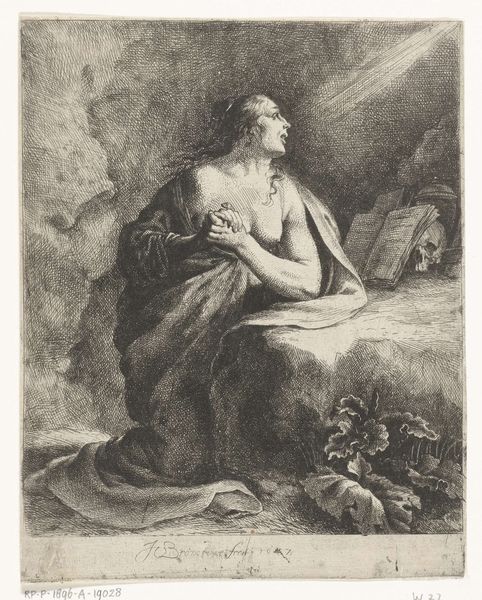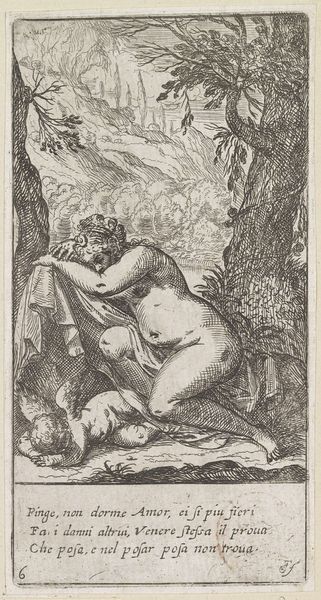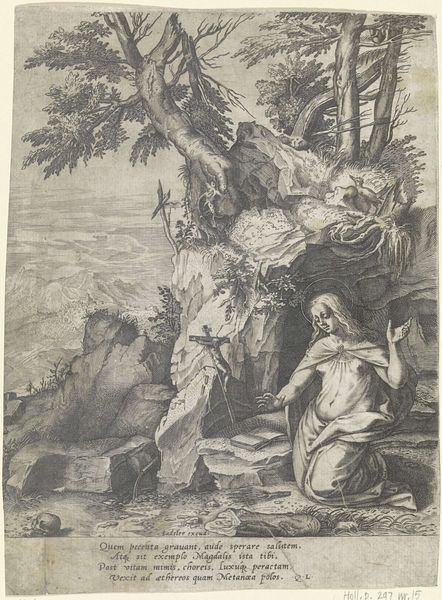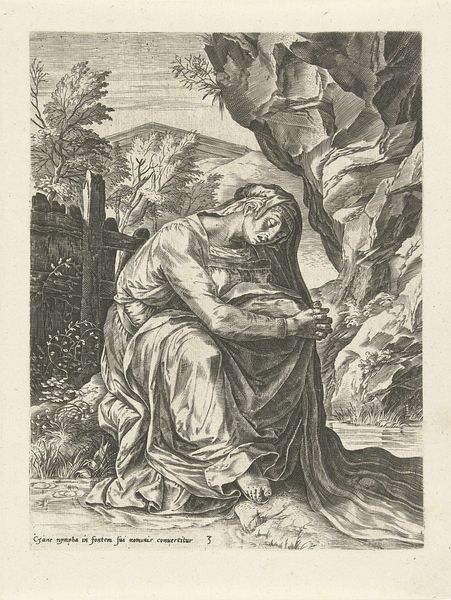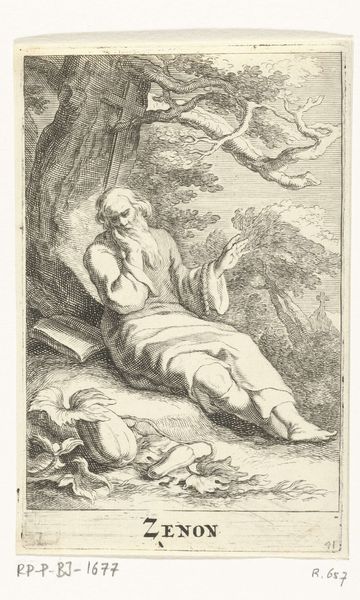
print, engraving
#
allegory
#
baroque
# print
#
engraving
Dimensions: height 386 mm, width 291 mm
Copyright: Rijks Museum: Open Domain
Editor: This is "Maria Magdalena mediterend," an engraving by Louis de Deyster, dating sometime between 1666 and 1711. I'm immediately struck by the somber mood, punctuated by the skull right next to Mary Magdalene. How do you interpret this work? Curator: Considering its historical context, we must think about the public role of art in 17th-century Europe. Deyster presents Mary Magdalene not just as a religious figure but also as a model for viewers. Do you see how the composition directs our gaze? Editor: Yes, the line from the skull to her face, and then up to the angels, almost like a narrative flow. Curator: Precisely. This composition would have resonated with audiences grappling with the ever-present reality of death and the Church's power in their lives. How might a wealthy patron use an image like this to cultivate a specific image? Editor: Maybe to signal their piety and encourage charitable acts? Curator: Exactly! Also, consider how engravings made art accessible to a wider audience. This image reinforced religious doctrines while subtly showcasing the patron's taste and status through their art collection. Do you find the stark contrast in imagery of death and cherubic angles intentional? Editor: Absolutely. The contrast amplifies the emotional impact, encouraging viewers to reflect on their own mortality and spirituality. It also humanizes her by placing an ethereal figure in more earthbound concepts. Curator: The print serves as both a devotional aid and a demonstration of cultural capital within a religiously charged environment. I had not considered it as a study on how art serves the elites through access. Thanks for that viewpoint!
Comments
No comments
Be the first to comment and join the conversation on the ultimate creative platform.
